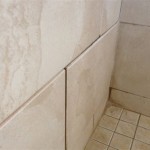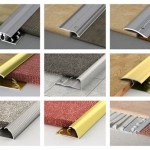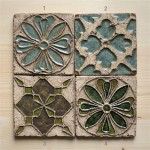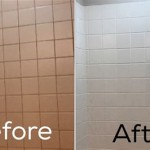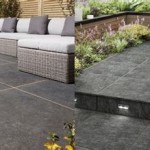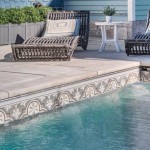Do I Need Backer Board For Wall Tile? Understanding the Requirements for a Successful Tile Installation
Installing wall tile can dramatically enhance the aesthetic appeal and functionality of a space, whether it's a kitchen backsplash, a bathroom shower, or an entryway accent wall. However, a successful and long-lasting tile installation hinges on proper preparation, and a crucial element of that preparation is the substrate – the surface onto which the tile is adhered. A key question that often arises is whether backer board is necessary. The short answer is generally yes, but the specific circumstances surrounding the installation will dictate the precise requirements. This article explores the reasons why backer board is typically recommended for wall tile projects, examines the alternative substrates that might be considered, and discusses the factors that influence the optimal choice for a particular application.
The primary purpose of backer board is to provide a stable, durable, and moisture-resistant surface for adhering tile. Unlike many common wall materials, backer board is specifically engineered to withstand the rigors of a tile installation, including the weight of the tile, the potential for water exposure, and the expansion and contraction that can occur with temperature fluctuations. Substituting backer board with an inadequate substrate can lead to a range of problems, from cracked tiles and grout lines to water damage and mold growth. Therefore, understanding the properties of backer board and its role in a wall tile project is essential for achieving a professional and lasting result.
Why Backer Board is the Preferred Substrate for Wall Tile
Backer board's prevalent use in wall tile installations stems from its superior performance characteristics compared to other potential substrates. Key advantages include dimensional stability, moisture resistance, and ease of installation. These attributes contribute significantly to the longevity and overall success of the tile project.
One of the most crucial advantages of backer board is its dimensional stability. This refers to the material's ability to resist changes in size and shape when exposed to moisture or temperature fluctuations. Many common wall materials, such as drywall or plywood, are susceptible to warping, swelling, or shrinking under these conditions. This movement can place stress on the tile and grout, leading to cracks and eventual failure of the installation. Backer board, on the other hand, is designed to maintain its shape and integrity, providing a solid and stable base for the tile. This stability is particularly important in areas prone to moisture, such as bathrooms and kitchens.
Moisture resistance is another critical factor in selecting a substrate for wall tile. In wet environments like showers and tub surrounds, water can penetrate behind the tile and damage the underlying material. Drywall, for example, will quickly deteriorate when exposed to moisture, leading to mold growth and structural damage. Backer board, particularly cement board, is specifically formulated to resist water absorption and prevent moisture from reaching the wall studs or other structural elements. This moisture resistance is crucial for preventing water damage and maintaining the integrity of the wall assembly. Some backer boards may require a waterproofing membrane in addition to the board itself, depending on the expected water exposure.
Finally, backer board is generally considered easy to install. It can be cut to size using a utility knife or circular saw and is typically fastened to the wall studs with screws. While proper installation techniques are essential, the process is relatively straightforward and can be accomplished by experienced DIYers or professional contractors. The uniform thickness and flat surface of backer board also contribute to a smoother and more consistent tile installation.
Alternative Substrates and Their Limitations
While backer board is generally the preferred choice, certain alternative substrates might be considered in specific circumstances. These alternatives, however, often come with limitations that must be carefully evaluated before making a decision. Common alternatives include drywall, green board (moisture-resistant drywall), and existing tile surfaces.
Standard drywall, also known as gypsum board, is generally not recommended as a substrate for wall tile, particularly in wet areas. Drywall is highly susceptible to moisture damage and will quickly deteriorate when exposed to water. Even in areas with limited moisture exposure, the dimensional instability of drywall can lead to cracks and grout failure. While it might be tempting to use drywall in dry areas to save cost, the long-term risks outweigh the short-term benefits.
Green board, or moisture-resistant drywall, offers somewhat improved moisture resistance compared to standard drywall. It is often used in bathrooms and kitchens, but it is still not a substitute for backer board in areas with direct water exposure, such as shower walls or tub surrounds. Green board is designed to withstand splashes and humidity, but it is not waterproof. Prolonged exposure to water will eventually lead to damage and mold growth. Therefore, while green board may be acceptable in certain low-moisture areas, it is crucial to understand its limitations and to use it in conjunction with a waterproofing membrane if necessary.
Existing tile surfaces can sometimes be used as a substrate for new tile, but this approach requires careful preparation and evaluation. The existing tile must be sound and firmly adhered to the wall. Any loose or damaged tiles must be removed and the surface properly cleaned and prepared. Additionally, the existing tile surface should be roughened to provide a better bonding surface for the new tile adhesive, using methods such as sanding. It's also essential to consider the added weight of the new tile and ensure that the wall structure can support the load. Using existing tile as a substrate can save time and money, but it is crucial to properly assess the condition of the existing tile and prepare the surface adequately to ensure a successful installation.
Factors Influencing the Choice of Substrate
The decision to use backer board, or an alternative substrate, should be based on a careful assessment of several factors, including the location of the tile installation, the type of tile being used, and the building codes and regulations in the area. These factors will help determine the appropriate substrate for the specific application.
The location of the tile installation is a primary consideration. Areas with high moisture exposure, such as showers, tub surrounds, and steam rooms, require a highly moisture-resistant substrate like cement board. Dry areas, such as kitchen backsplashes or accent walls in living rooms, may allow for the use of alternative substrates like green board, provided they are properly installed and protected from moisture. The level of moisture exposure should be carefully evaluated to determine the appropriate substrate for the specific location.
The type of tile being used also influences the choice of substrate. Large format tiles or heavy stone tiles require a particularly rigid and stable substrate to prevent cracking and movement. Lightweight ceramic or glass tiles may be suitable for installation over alternative substrates, provided the surface is properly prepared and the weight of the tile is not excessive. The weight and size of the tile should be considered when selecting the appropriate substrate to ensure a long-lasting installation.
Finally, local building codes and regulations may dictate the type of substrate required for wall tile installations. These codes are designed to ensure the safety and durability of building structures and may specify the use of backer board in certain applications. It is essential to consult with local building officials or a qualified contractor to ensure that the chosen substrate complies with all applicable codes and regulations. Failure to comply with building codes can result in costly repairs and potential safety hazards.
In summary, while alternatives exist, backer board remains the most reliable and recommended substrate for wall tile installations, particularly in areas prone to moisture. Its dimensional stability, moisture resistance, and ease of installation make it a superior choice compared to drywall, green board, or existing tile surfaces. By carefully considering the location of the tile installation, the type of tile being used, and the applicable building codes, one can make an informed decision about the appropriate substrate for achieving a successful and long-lasting wall tile project.

Tile Backerboard Material Options Fine Homebuilding

Busting The Myths Of Shower Tile Backer Board Pro Advice

Tile Backer Board Breakdown Which One Is Best For Showers Diytileguy

How To Install Cement Board For Tile Projects Diy Family Handyman

Tile Backer Board Benefits Uses Insulation

What Lies Beneath Tsj

Tile Backer Board Installation Key Steps For A Quality Armchair Builder Blog Build Renovate Repair Your Own Home Save Money As An Owner

Tile Installation Backer Board Around A Bathtub Family Handyman

Benefits Of Tile Backer Boards In A Wetroom Ccl Wetrooms

What You Need To Know About Tile Board Canadian Home Style
Related Posts

